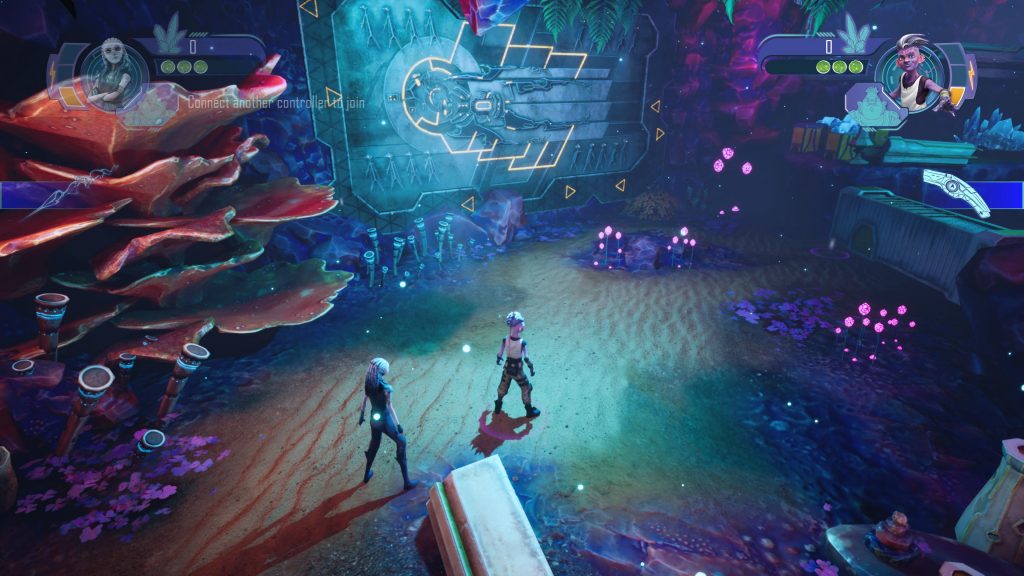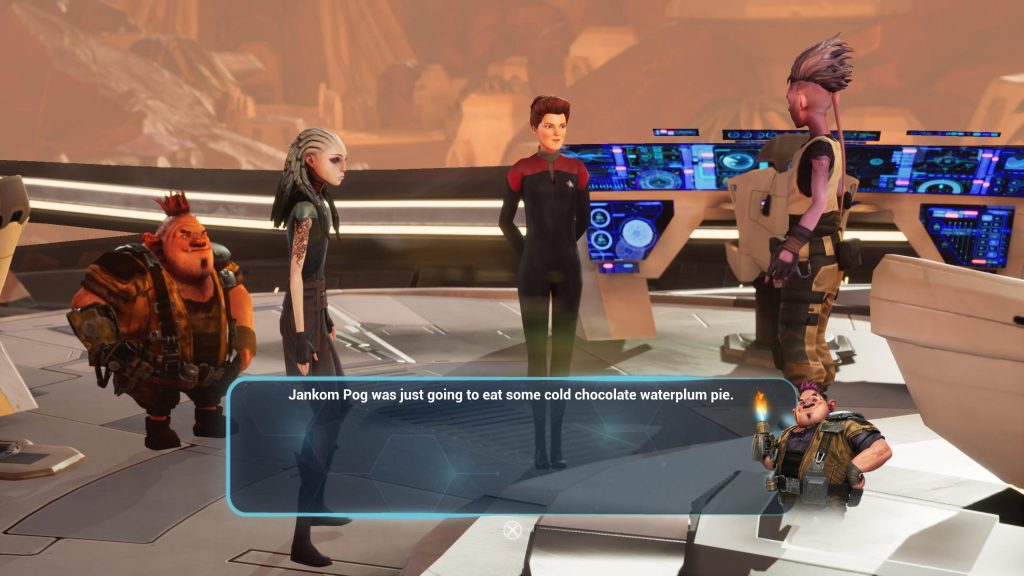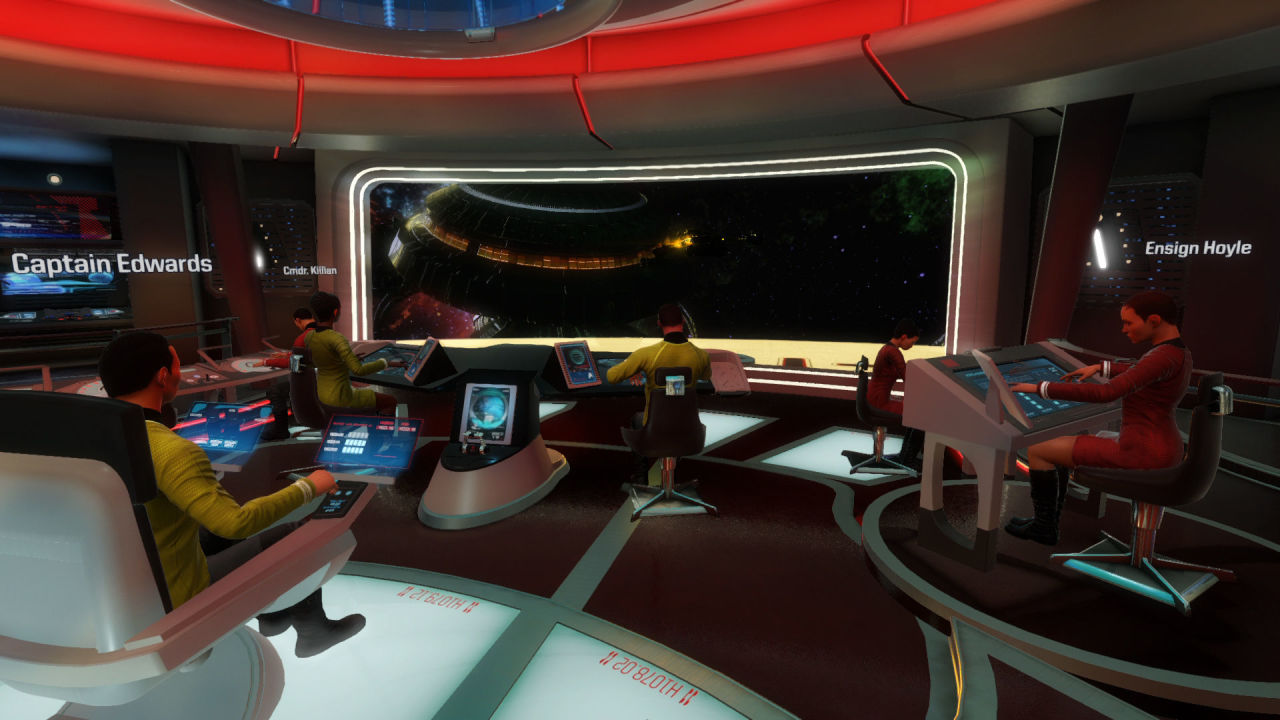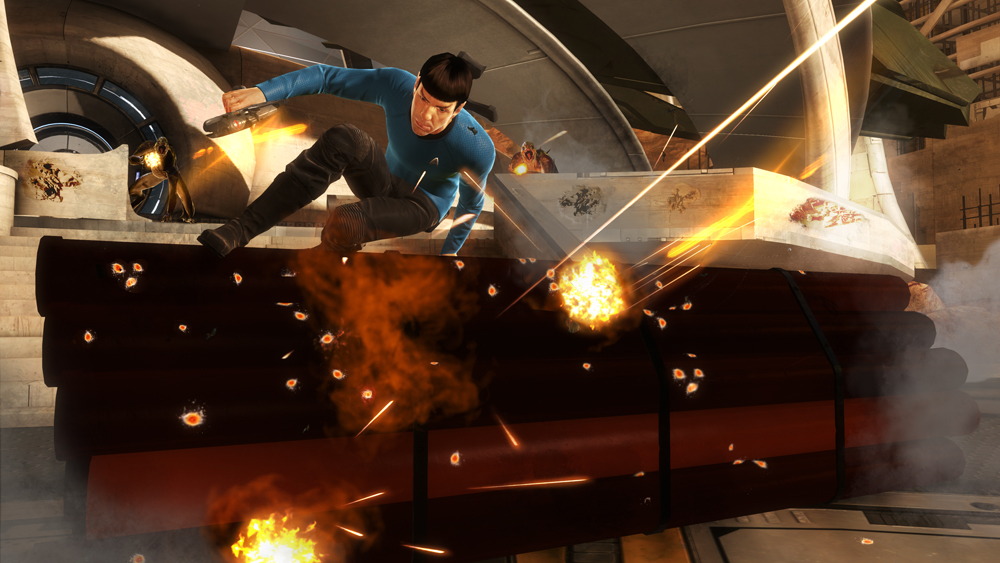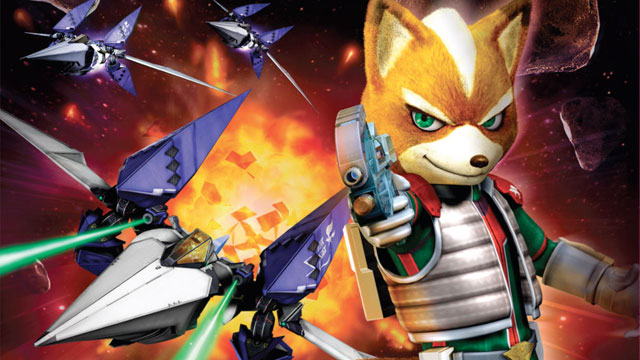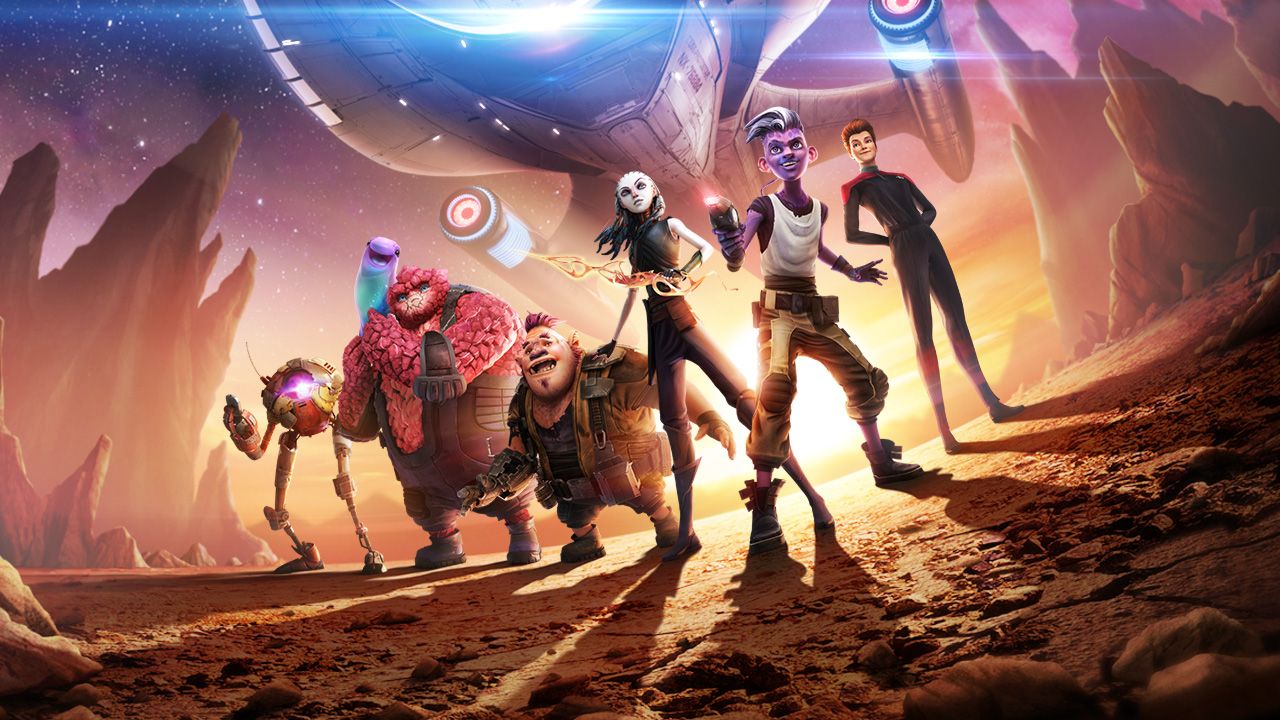
It’s been slim pickings if you’re a Star Trek fan who’s also into video games, especially in the last decade. While there are mobile offerings, like the recent Star Trek Lower Decks: The Badgey Directive, and even VR offerings like 2017’s Star Trek Bridge Crew, the only real continued source of larger scope Star Trek gaming has been in the surprisingly consistent stream of updates to the now-ancient Star Trek Online, which has not only lasted 12 years but has even had influence in the mainline TV shows. That’s all to say, it’s been a fair while since we had a console Star Trek game, and Star Trek Prodigy: Supernova has appeared kind of out of the blue to finally deliver a morsel of co-op Trek adventure to fans.
Based on the recent kid-targeted CGI-animated show, Star Trek Prodigy, Supernova fits oddly specifically into the mid-season break, which ends in a few weeks time when the show returns. The show itself serves both as a sequel of sorts to the Captain Janeway-led Star Trek Voyager, as well as a modern and rousing entry-point to the franchise for the younger generation. The quick rundown for the show is that it follows a group of alien teenagers, enslaved by a mysterious ‘Diviner’ and his robotic servant Drednok, who manage to escape their imprisonment after discovering an abandoned Federation starship, the USS Protostar. Mistaken for cadets by the ship’s training hologram, modelled on Captain Janeway, the group commandeer the ship and learn all about first contact, the Prime Directive and all that boldly going it involves.
Supernova sees the group separated after they encounter a system powered by a central Dyson Sphere around its star, which is on the verge of going supernova. Of course, it turns out this is due to malicious interference from Drednok and his ‘Watcher’ minions, and so the cadets set out to re-group and stop Drednok’s plans. The plot itself is a fairly standard adventure, elevated somewhat by performances from all the original cast, including Kate Mulgrew as Janeway. It twists itself into knots to explain having the same villains as the first part of season one, and only partially succeeds. As a Star Trek fan, it sways wildly back and forth between charmingly faithful and annoyingly rote – while there are cute references to the franchise’s history like Porthos the beagle, or Janeway’s salamander experience, the regular dialogue seems to insert random Trek references at every opportunity, regardless of whether they make sense or not. OK, a reference to Tholian minerals, that makes sense. But Bajorans and cloaks? Cardassian fire pits? Trekkies, anal as we are, will pick up on every one of these bizarrely incorrect references, which is a shame given the show itself is relatively smart about its place in the wider Star Trek universe.
Gameplay disappointingly centres around only two of the Prodigy cast, acting captain Dal and communications expert Gwyndala. It’s a shame since the broader cast includes characters that would lend themselves to unique abilities that an action game like Supernova could do a lot with – from strength of stone giant Rok-Tahk, to Jankom Pog’s cybernetic arm and engineering skill, and Zero’s telepathic and non-corporeal abilities. Instead, these characters are reduced to special moves that kind of just auto-activate themselves, possibly the most boring way to include them.
However, it’s also clear that this is a budget title, produced with clear limitations on characters and enemy variety (which are essentially re-colours of the same ‘Watcher’ robot). Graphics, while somewhat varied between the game’s three main planets, are simple and often have bugs, particularly in the Protostar’s Holodeck. Spelling errors abound, as do subtitles that are often completely divorced from what the voiced character’s dialogue actually says.
Played from a top-down perspective, in either two-player co-op or single player with an AI companion, Combat is exceedingly simple, with Dal favouring ranged weapons and Gwyn favouring melee attacks. Playing as Dal is particularly easy, as his dual-phasers are usually enough to wear down enemy health bars quickly, until auto-targeting the next one, with minimal cooldown. The game counters this by sometimes swamping you with unmanageable amounts of robots, particularly in the Holodeck challenge missions, with a bare-bones upgrade system for each of your weapons to help tackle this.
That all said, despite the budget nature of this game, the game’s co-op puzzles can actually be quite enjoyable and show a good amount of creativity on the part of the developers. Both Gwyn and Dal have unique abilities that can assist the other in traversing environments – Gwyn is able to create bridges for Dal with her armorphous-sword ‘Fretwork’, while Dal can camouflage to sneak past sensors (no idea if this is a canon ability), or lift up crates for Gwyn to sneak under. Their abilities are used in combination with familiar tropes like pushing crates or re-directing power to clear paths ahead, but it all works fairly well and requires planning and communication with your partner.
Particularly interesting are a handful of sections where Gwyn and Dal are separated in time, with one transported to the same environment in the distant past. The player in the past must move objects and manipulate the environment for the player in the present to proceed, which is actually a neat idea that’s well executed the few times it’s used. Beyond that, there are also some extra challenges behind locked doors, requiring your fellow crew-mates to open for you, meaning that most levels will need to be re-played in order to collect everything – which includes some nice Star Trek memorabilia, various alien plants and cute creatures known as ‘Punnies’. Given the length of most levels – 30-40 minutes and upwards, this can be a little irritating, especially if you just miss a locked area and find yourself unable to go back as the level gates you forward.
Star Trek‘s return to console gaming is a relatively low budget affair in Star Trek Prodigy: Supernova and expectations should be set accordingly. It’s a co-op action game aimed at the same demographic as the show – namely kids and young teens – with some wider Star Trek references thrown in for older fans, whether they make any sense or not. It doesn’t match the energy or charm of Prodigy itself, which is genuinely a fun animated show, but neither is it unenjoyable. With a partner, it’s a perfectly fun co-op experience, with some genuinely decent puzzles and fairly average action. There’s not much here for Star Trek fans in general, you’ll need to wait for 2023’s Star Trek: Resurgence I expect for your fix, but for younger fans of the animated show this is a perfectly decent action game.
-Some creative puzzles and well-thought out co-op gameplay -Super quick loading on PS5 -Cute Trek references in its collectibles
-Looks and feels like a budget title, with repetitive enemies, combat and design -Not really compelling enough for the multiple playthroughs its collectibles require.

